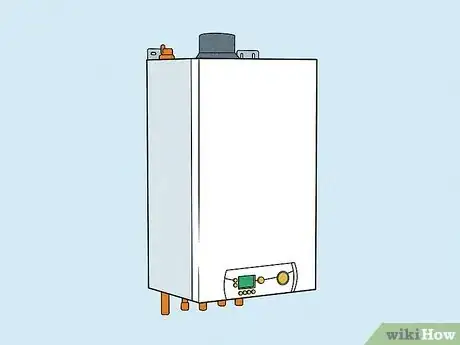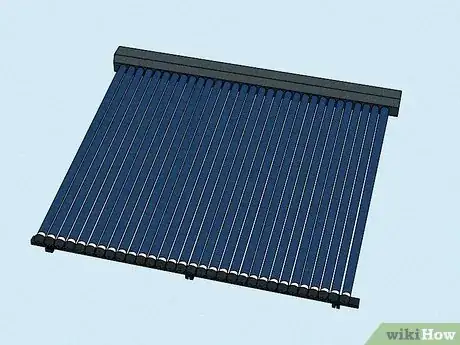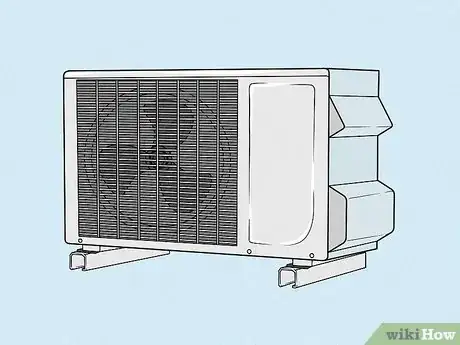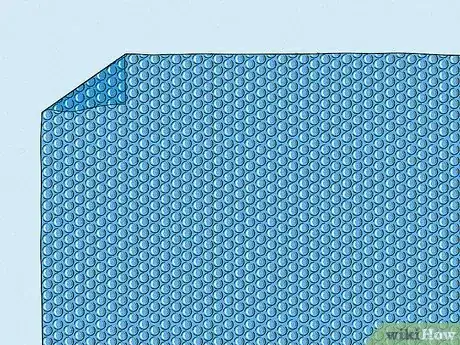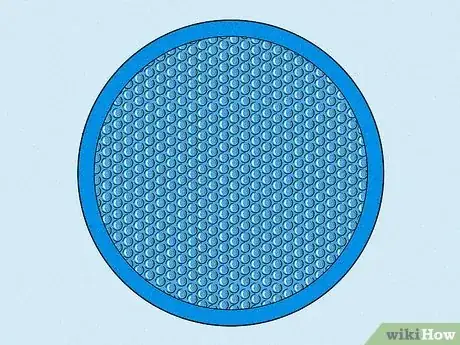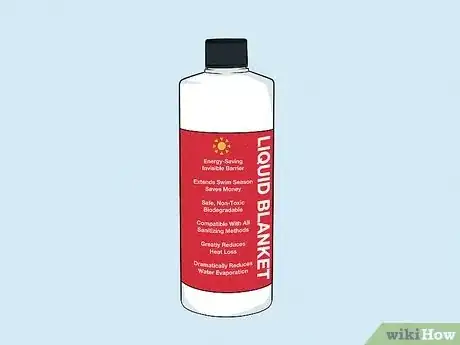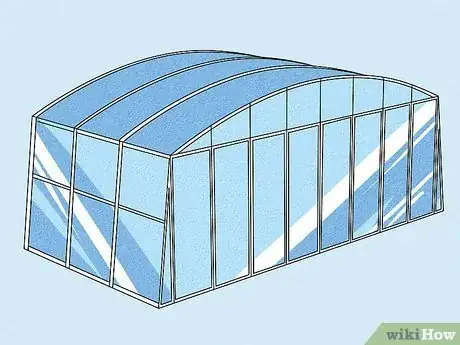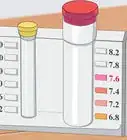This article was co-authored by Rob Litman and by wikiHow staff writer, Caroline Heiderscheit. Rob Litman is a Landscaper, General Contractor, and the CEO of Vitoli Inc., a landscaping, hardscaping, ecoscaping, and swimming pool design company in Los Angeles, California. With over 20 years of experience in construction, Rob specializes in energy-efficient and drought-tolerant landscaping. He holds General Building Contractor (Class B) and Registered Pool/Spa Contractor Licenses. In 2007, Rob won House of the Year in Gardena, California.
There are 9 references cited in this article, which can be found at the bottom of the page.
This article has been viewed 3,716 times.
A few extra weeks (or months!) in your above-ground pool can mean even more refreshing laps and relaxing dips. But how can you keep your pool warm enough to swim, even when temperatures drop? Lucky for you, there are actually so many amazing methods to explore. We're going to walk you through the most effective, cheapest, easiest to install, and even the prettiest heating options on the market today. By the time you're done reading, you'll know exactly which heater is right for you. To learn everything you need to know, read on!
Steps
Gas Water Heater
-
For the fastest and most reliable method, go with a gas water heater. Gas or propane water heaters raise your pool’s temp by more than 30 degrees F. Your heater will sit directly next to your pool. Using a pump, it'll draw water into the box-shaped unit, heat it, and release the warm water back into the pool on a loop. If you're particular about your pool's heat, look into gas water heaters, which allow you to set your water temp.[1] X Trustworthy Source U.S. Department of Energy Official site for the U.S. Department of Energy, which provides resources related to energy safety, conservation, and efficiency Go to source
- Pros: Most effective and consistent pool water heater for the whole year, regardless of location or pool size.
- Cons: Ongoing energy costs to fuel your pool’s heater. This option may be cheaper upfront, but it’s more expensive than other options to run long term.
- Cost: $2,000-2,800 + $300-500 per month.
- How to install: This'll take complicated electrical and plumbing work, so you'll have to call a professional. Consider calling around for a free consultation first to give you a better idea of the cost.
Solar Water Heater
-
For a powerful but nature-friendly option, choose a solar heater. Solar water heaters can warm your pool’s water by over 20 degrees F. They attach to your pool, take in water, and, over time, heat the water using power from the sun. You’ll need big, black solar mats installed on your roof or yard—so they’re more expensive upfront. Look into this if you care about the environment and want a long-lasting unit.[2] X Trustworthy Source U.S. Department of Energy Official site for the U.S. Department of Energy, which provides resources related to energy safety, conservation, and efficiency Go to source
- Pros: Environmentally friendly option, evidence suggests these units last longer, and with no energy costs, this could save you money in the long run.
- Cons: If the sun isn’t out, your pool isn't heated (cloudy & cold regions aren’t well suited for this option). Plus, the initial cost is higher, and this heater works slower than a gas heater.
- Cost: $2,500-4,000 + ~300 per year
- How to install: If you have advanced plumbing experience, you might be able to install this on your own. But if you don't, hire a professional to do this for you. That way, you'll be super happy with the end product!
Heat Pump
-
To avoid energy costs, heat your pool effectively with a heat pump. Heat pumps use nearby warm air to raise your pool’s water temperature. They're large, rectangular units that'll be installed in an outdoor location with good ventilation. Unlike heaters, pumps don’t require a gas or energy source to keep them going. Look into this option if you live somewhere that's warm year round or you just want to extend your pool’s season, not keep it warmed through winter.[3] X Trustworthy Source U.S. Department of Energy Official site for the U.S. Department of Energy, which provides resources related to energy safety, conservation, and efficiency Go to source
- Pros: Little ongoing energy cost and more environmentally friendly than a gas heater, while still raising temperatures by 20 degrees F.
- Cons: Might require more regular maintenance, shouldn’t be used in places where winter and spring temps drop below {{convert|60|F|C}, and doesn’t offer year-round warmth.
- Cost: $2,000-5,000 + ~$100 per month
- How to install: Because heat pumps sometimes need more maintenance down the road, you'll definitely want it installed correctly. For best results, have a professional find your pool's size and install a pump for you.
Solar Blanket
-
If you want heat and less pool maintenance, go with a solar blanket. Solar blankets, or a big, plastic sheets that you lay over your entire pool's surface, take water evaporation down to nearly zero. Evaporation is how pools lose most of their heat (and their important chemicals!) so these covers will save you time and money. If you hate to clean your pool, then explore this option—pool covers also protect your pool from algae and debris.[4] X Trustworthy Source U.S. Department of Energy Official site for the U.S. Department of Energy, which provides resources related to energy safety, conservation, and efficiency Go to source
- Pros: Cheaper, little ongoing cost, reduce water and chemical evaporation, and environmentally friendly.
- Cons: Won’t give you year-round warmth and only effective in sunny and warm environments.
- Cost: $50-200
- How to install: Simply lay your blanket across the pool. You may need more than one person for this (or risk getting a little wet!)
Solar Rings
-
For super easy installation, heat your pool with solar power rings. Solar rings are a cheaper option (though not as cheap as a solar blanket) and, using heat from the sun, they warm your pool automatically. Unlike blankets, you won’t need to cut or lay out a giant sheet—instead, simply lay each small, round plastic pool ring so that they cover your pool's surface. Their edges are magnetic, so every ring will connect with nearby rings.[5] X Research source
- Pros: Easy to install, cheap, good for the environment, and adjustable to any pool size.
- Cons: Allow for debris to enter the pool, rely on sun to heat your pool, and aren’t powerful enough to keep your pool heated year round.
- Cost: $35.00 per ring
- How to install: Simply lay them on your pool and attach the rings via their magnetic edges.
Liquid Blanket
-
For an aesthetically pleasing option, go with an invisible heater. If you think heaters, pumps, and blankets are an eyesore, opt for a chemical “blanket” instead. These can raise your temps by 6 degrees F and slow your pool's evaporation as well. Plus, liquid blankets are safe for people, pets, and your pool equipment.[6] X Research source
- Pros: Environmentally friendly, easy to install, and visually pleasing.
- Cons: Not a super effective option and won’t keep your pool heated year round—especially not in places with cold seasons.
- Cost: $44.00 every 2 months
- How to install: Measure the correct chemical dosage and add to your pool each day.
Wind Shielding
-
An enclosure can help decrease heat loss and evaporation over time. Though the initial building costs may be daunting, a pool enclosure will keep debris out, allow you to swim in rainy and windy weather, and help supplement other heating efforts with no ongoing costs. Plus, by constructing a big wind blockade that rises and stretches over your pool's surface, you can create a new eye-catching feature in your yard.[7] X Research source
- Pros: Can dress up your above-ground pool and make other heating methods more effective.
- Cons: A little pricier at the start and won’t be enough to heat your pool properly on its own.
- Cost: $5,000-15,000[8] X Research source
- How to install: You may be able to DIY your way through this one, but for the best results, hire a professional. Come up with the perfect blueprints yourself, then hire a contractor to handle the rest!
- Usually, there are several stages in building a pool.[9] X Research source
- The first stage is planning and design. The next stages are engineering and permitting.
- The planning process takes two and a half weeks, the permitting process takes two weeks, and the building process takes 12 weeks.
You Might Also Like
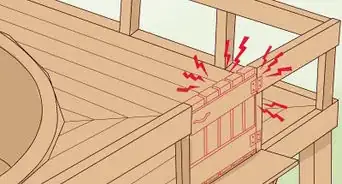
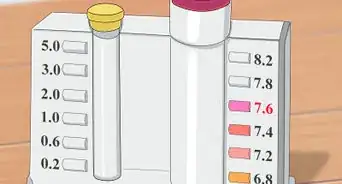




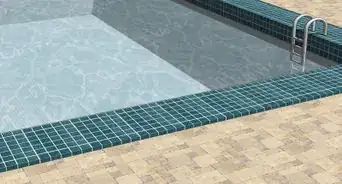
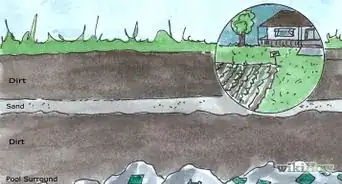
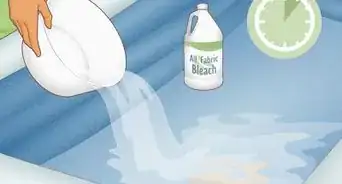 How to Keep Inflatable Pool Water Clean
How to Keep Inflatable Pool Water Clean
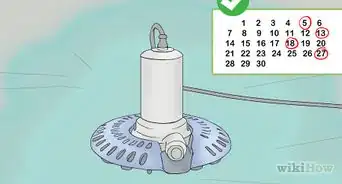
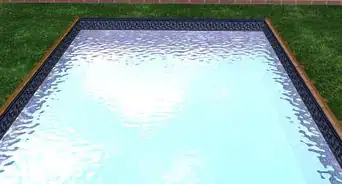

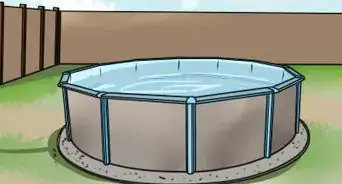
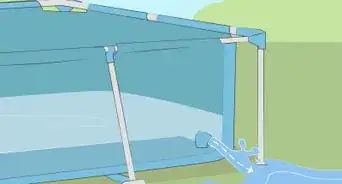 2 Ways to Drain an Above-Ground Pool
2 Ways to Drain an Above-Ground Pool
References
- ↑ https://www.energy.gov/energysaver/gas-pool-heaters
- ↑ https://www.energy.gov/energysaver/solar-swimming-pool-heaters
- ↑ https://www.energy.gov/energysaver/heat-pump-swimming-pool-heaters
- ↑ https://www.energy.gov/energysaver/swimming-pool-covers
- ↑ https://thecelebtimes.com/how-do-solar-sun-rings-work
- ↑ https://poolonomics.com/liquid-solar-blanket/
- ↑ https://www.gardeningetc.com/us/advice/how-to-heat-a-pool-without-a-heater
- ↑ https://www.homeadvisor.com/cost/swimming-pools-hot-tubs-and-saunas/build-a-swimming-pool-enclosure/
- ↑ https://www.mrpoolman.com.au/blogs/news/what-are-the-steps-to-building-a-pool-pool-building-process
About This Article

